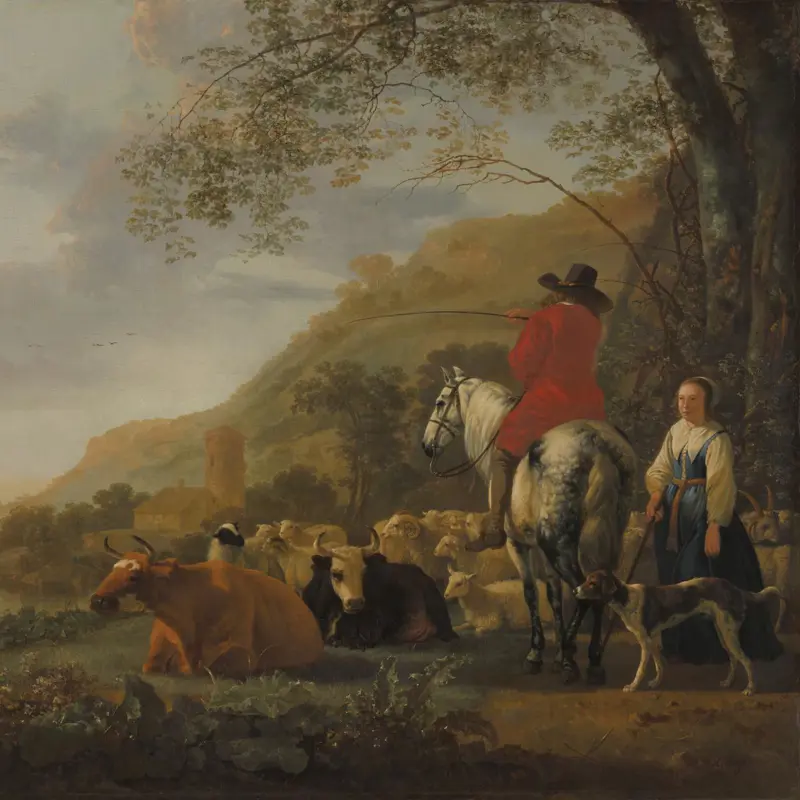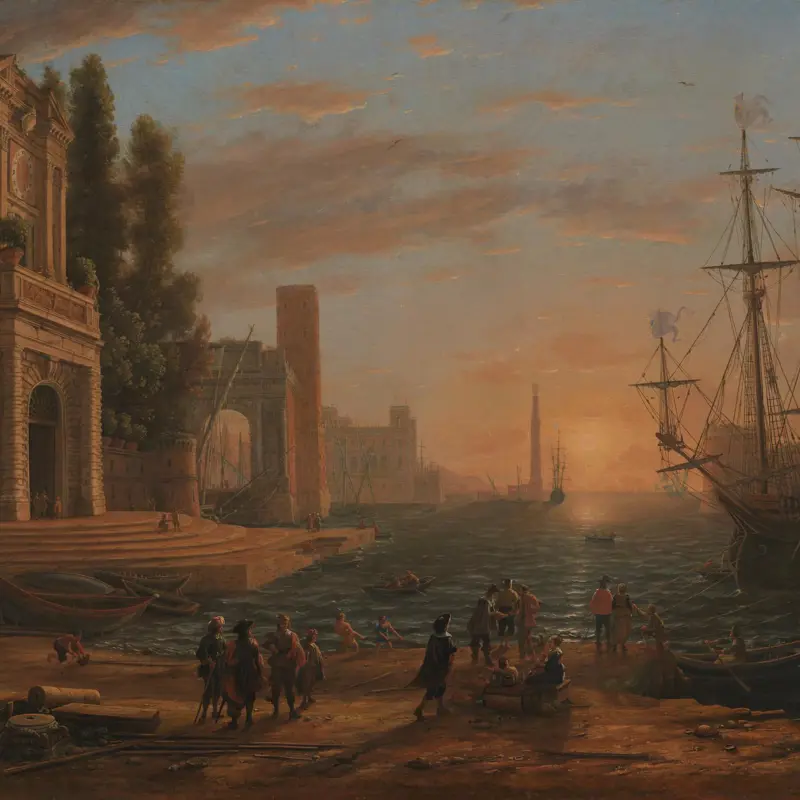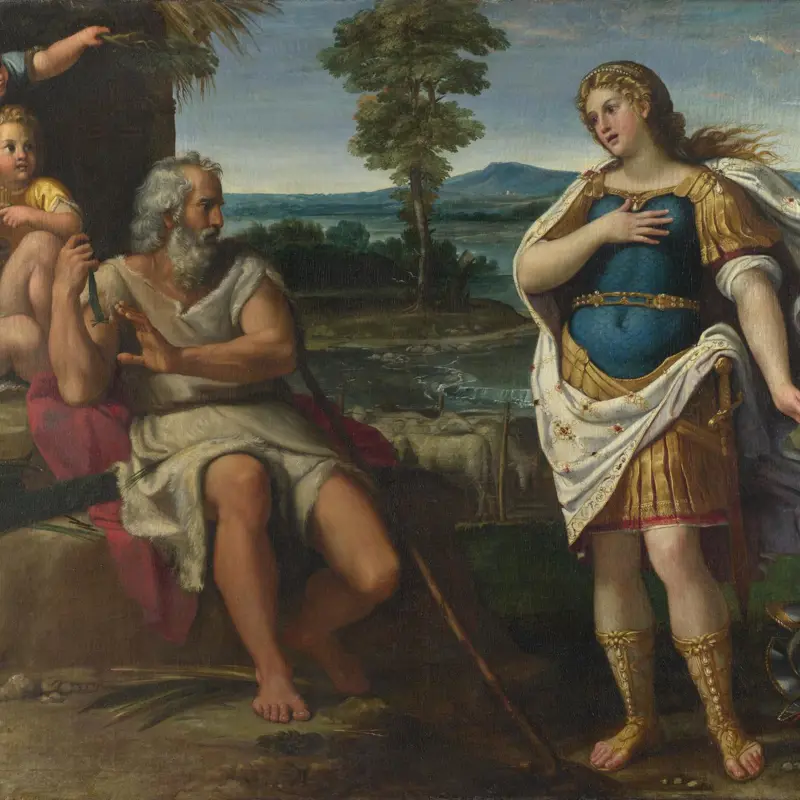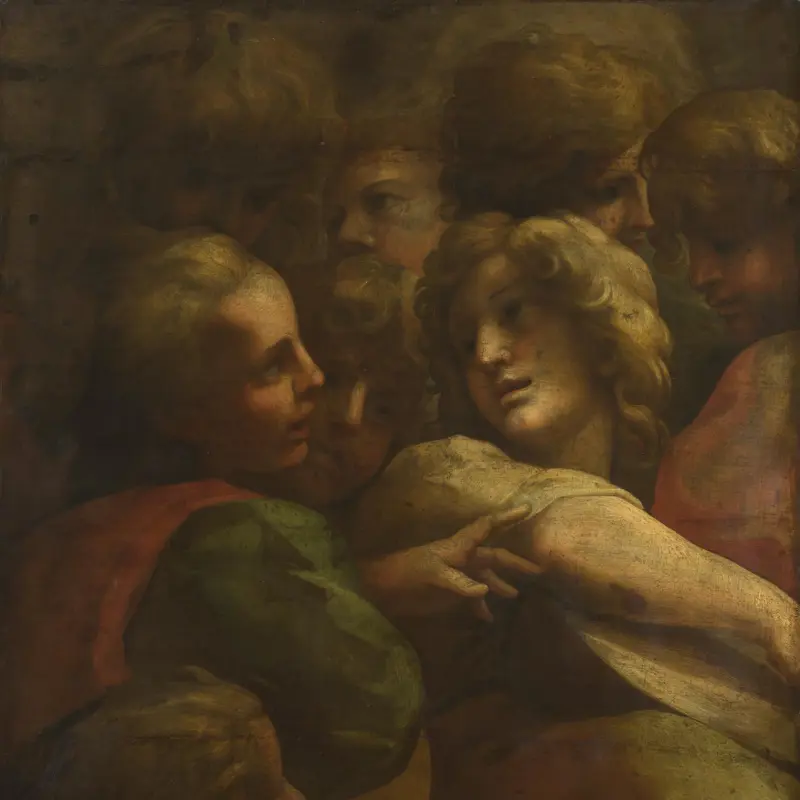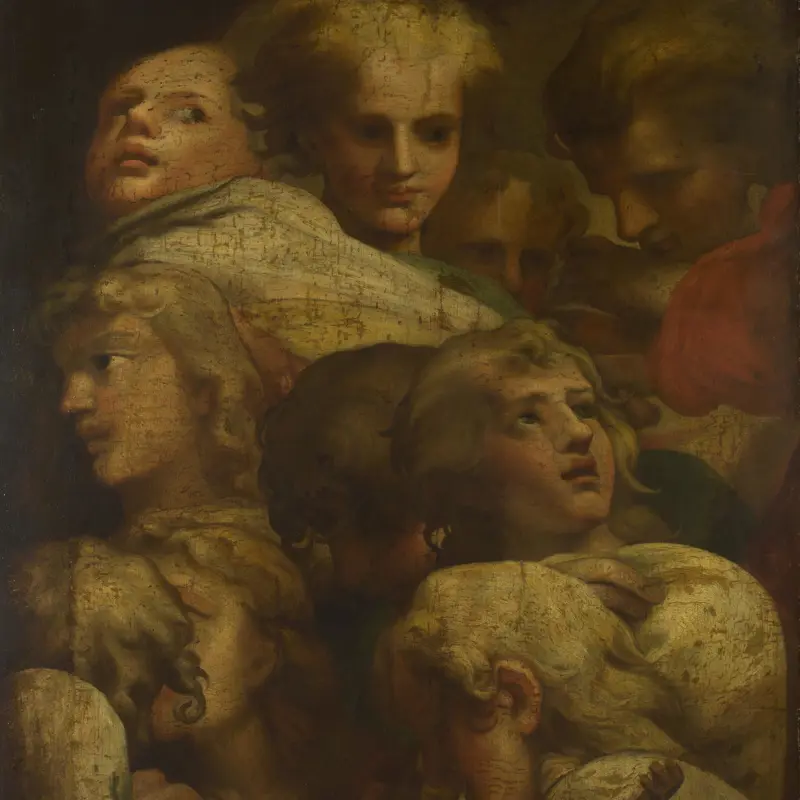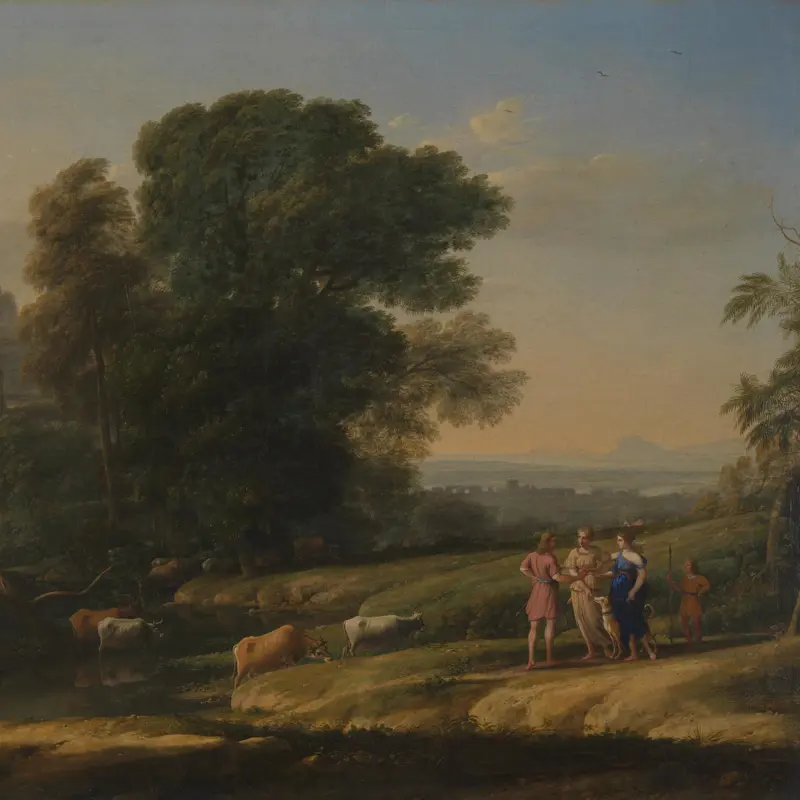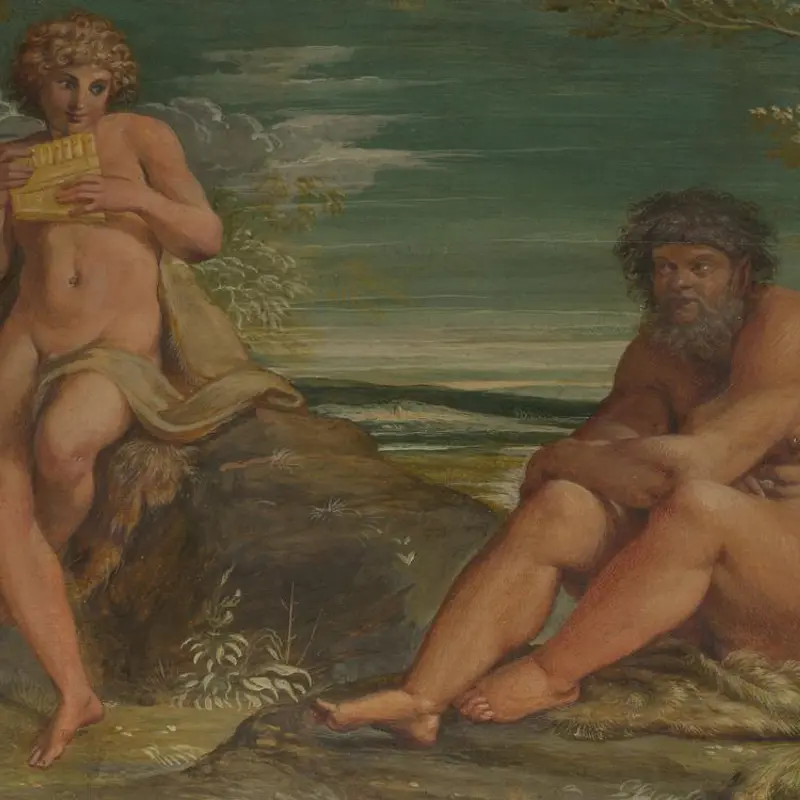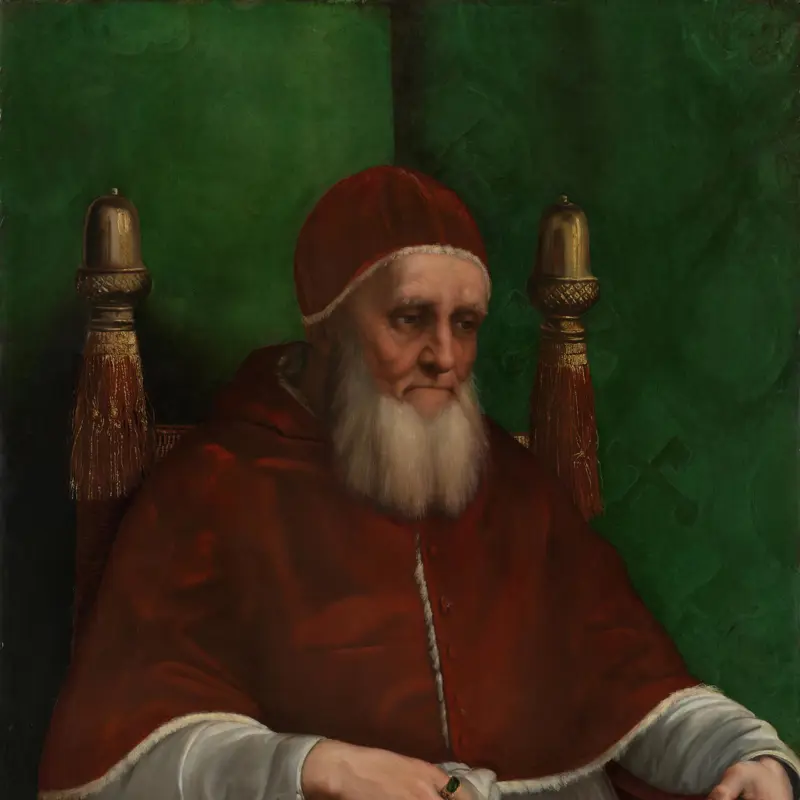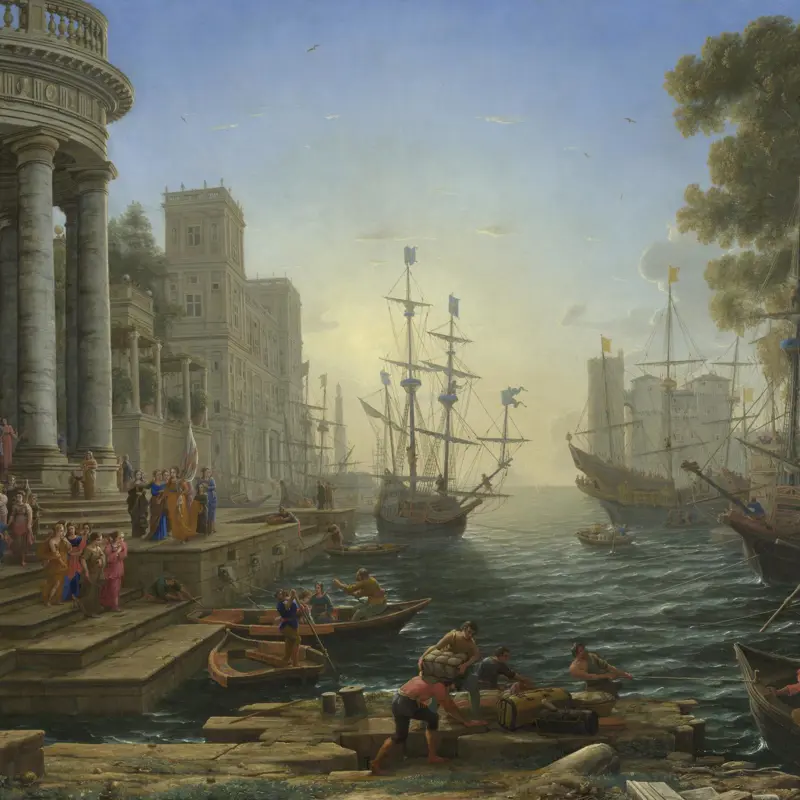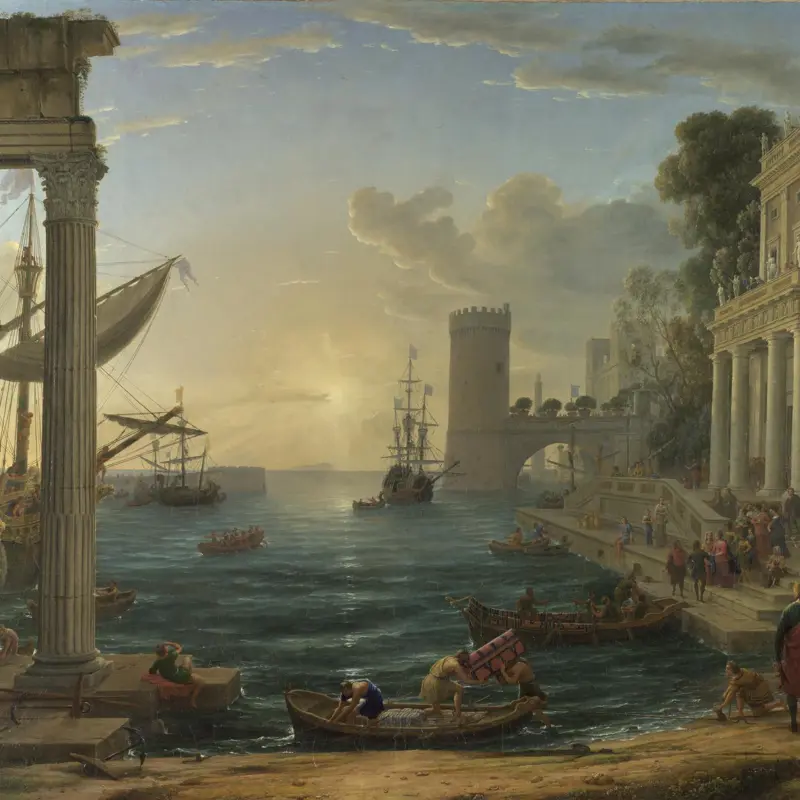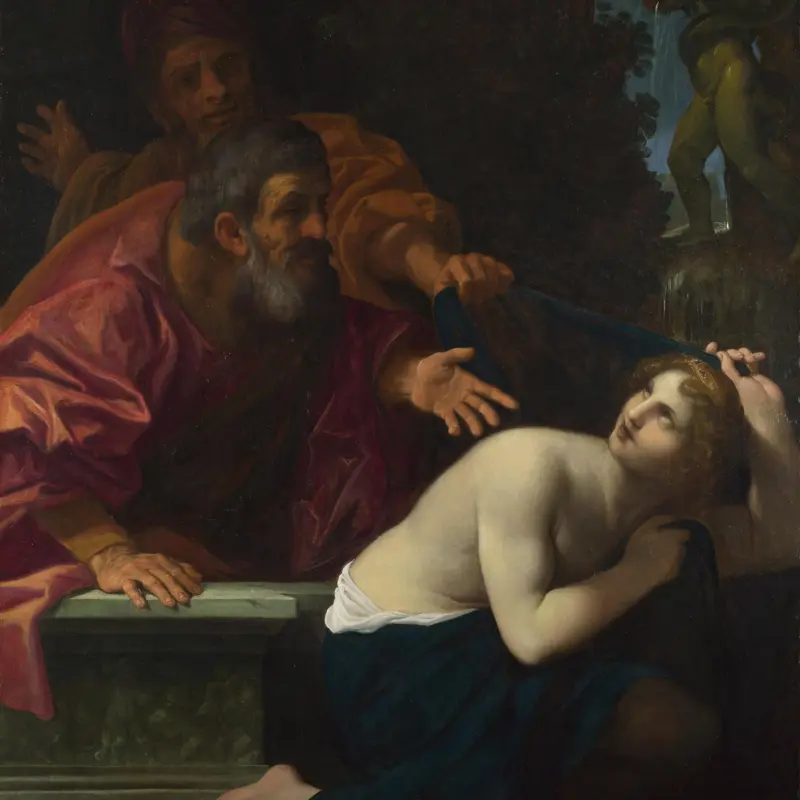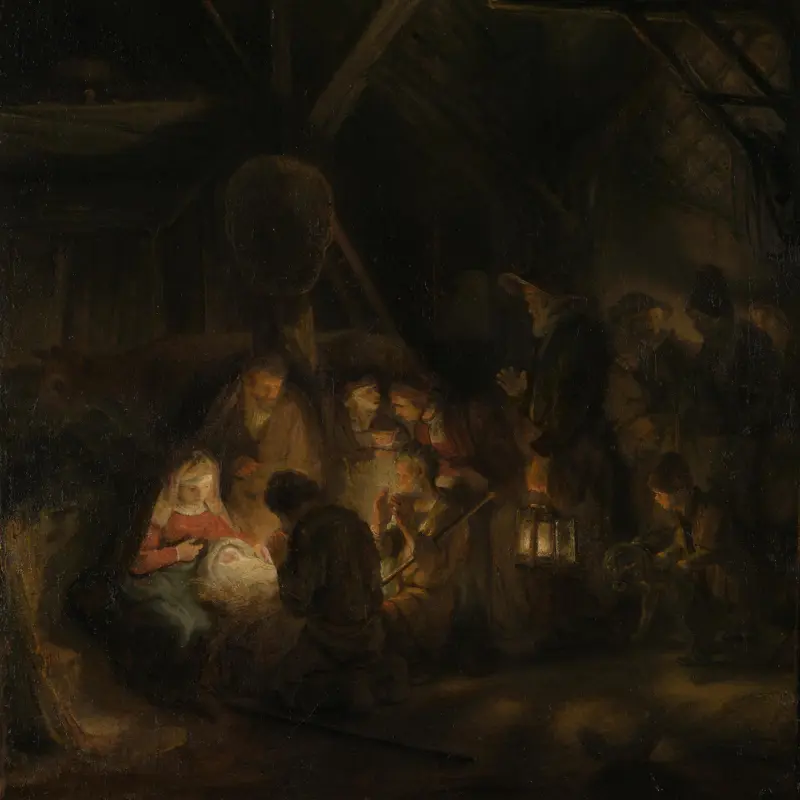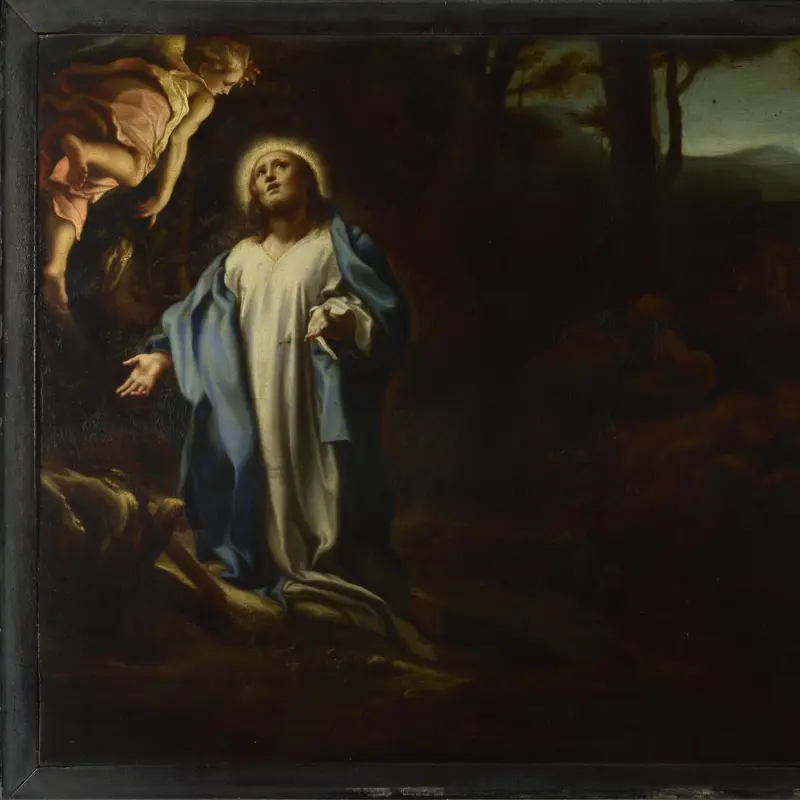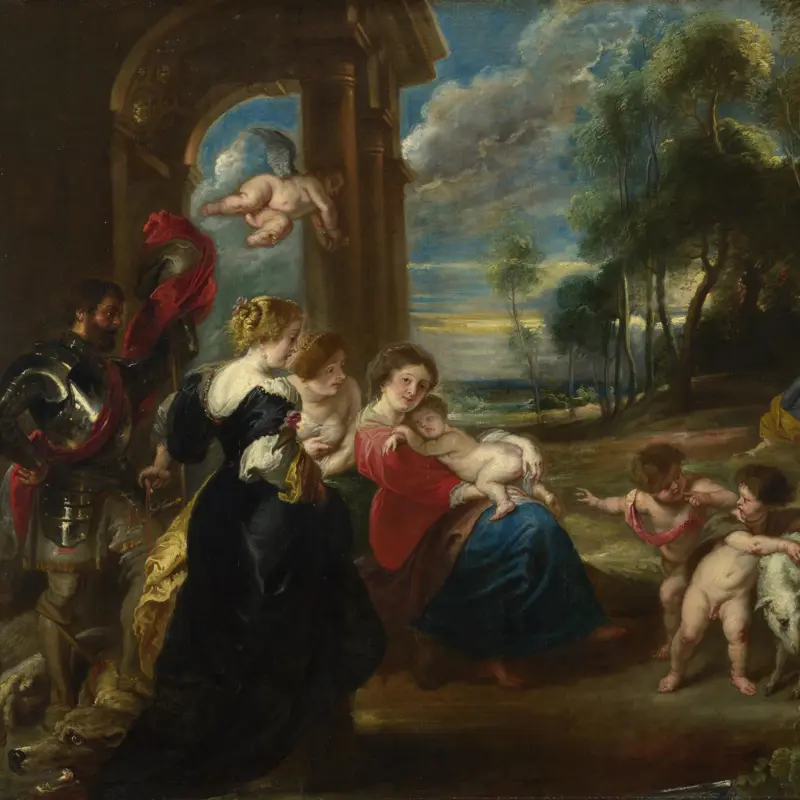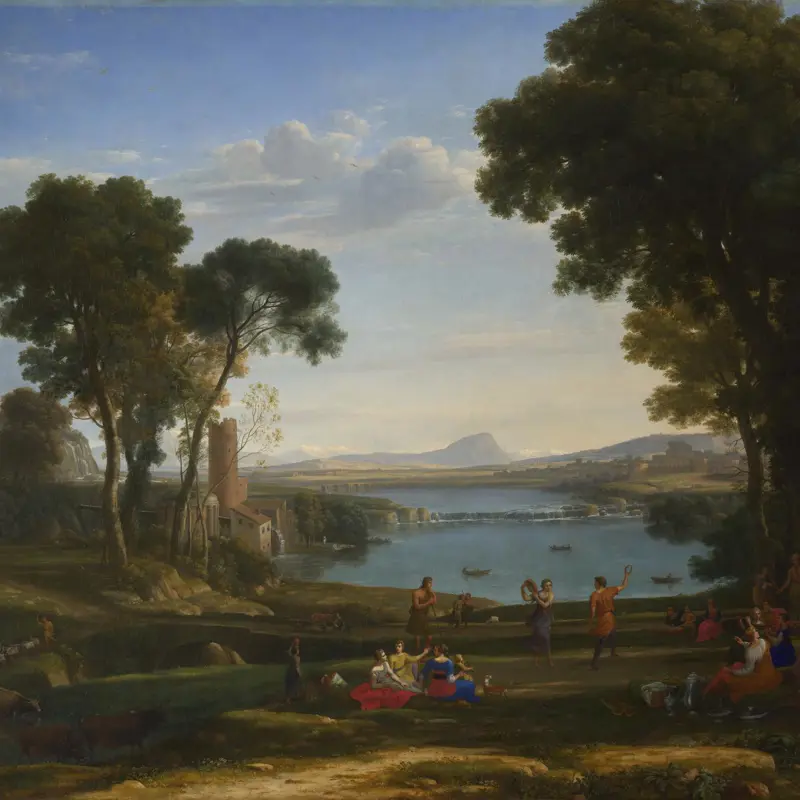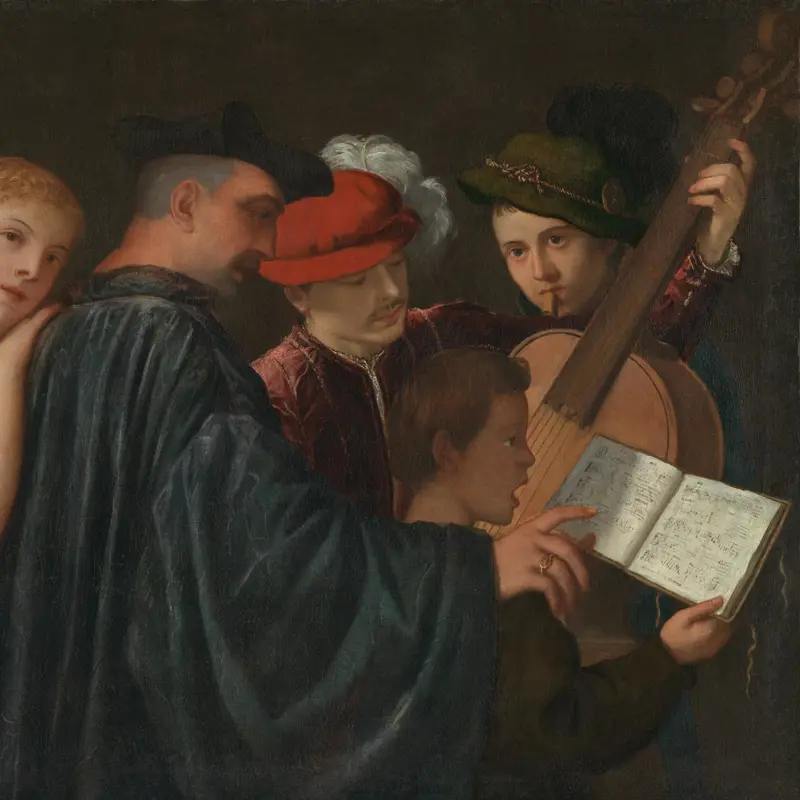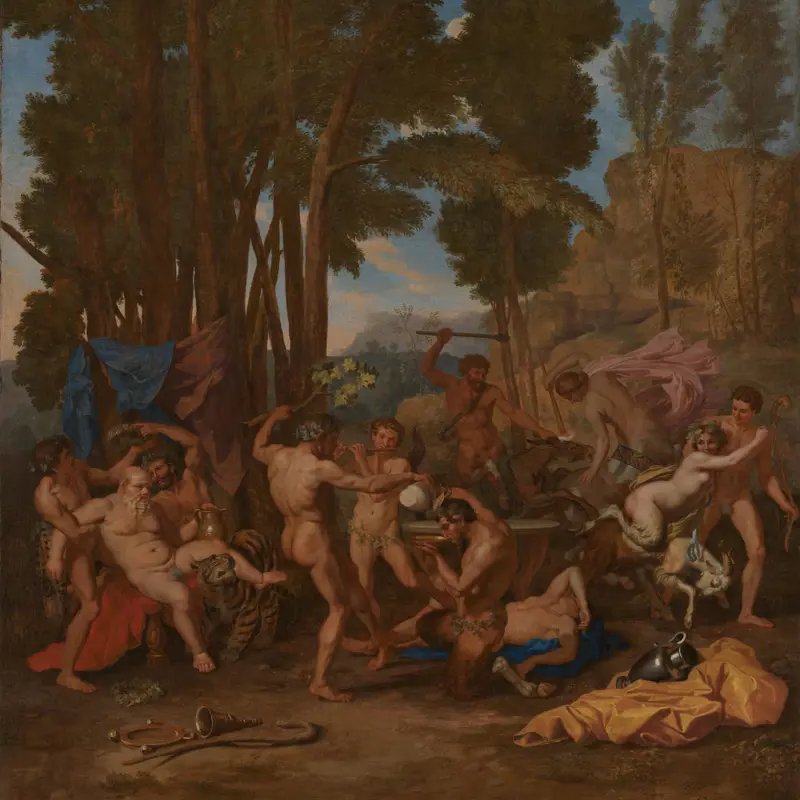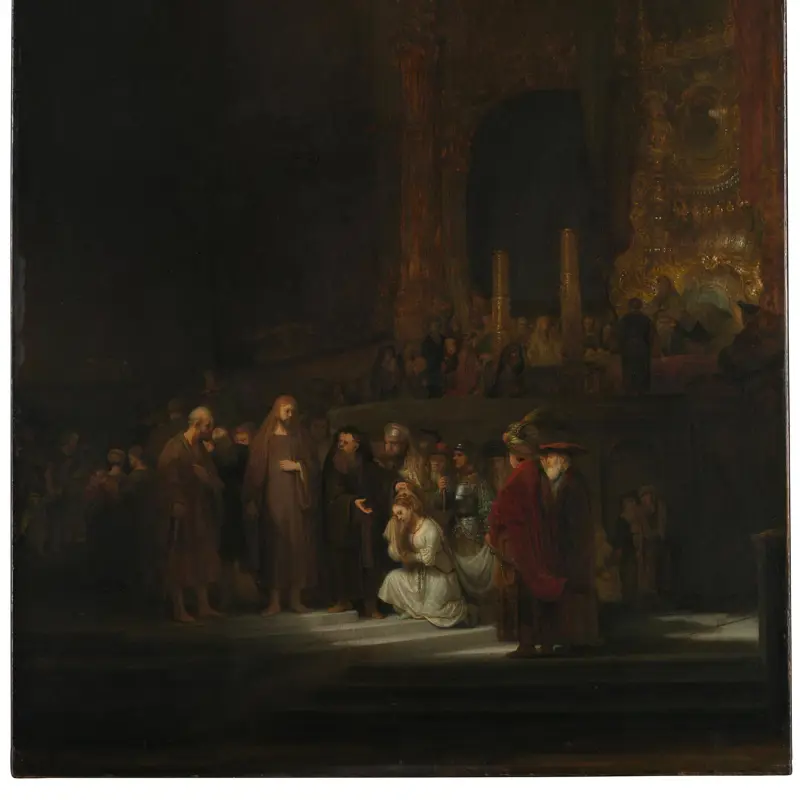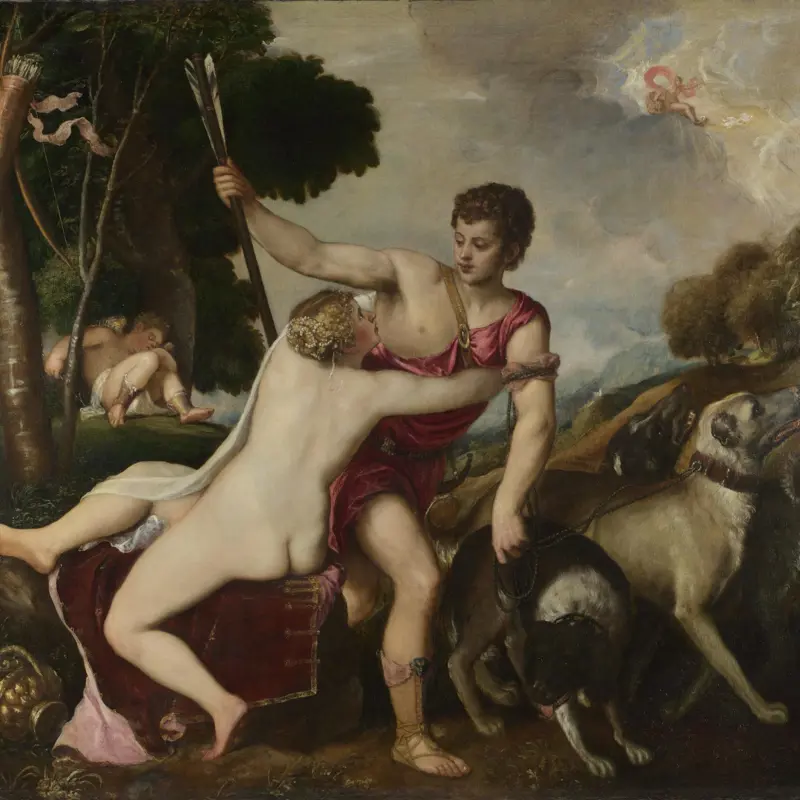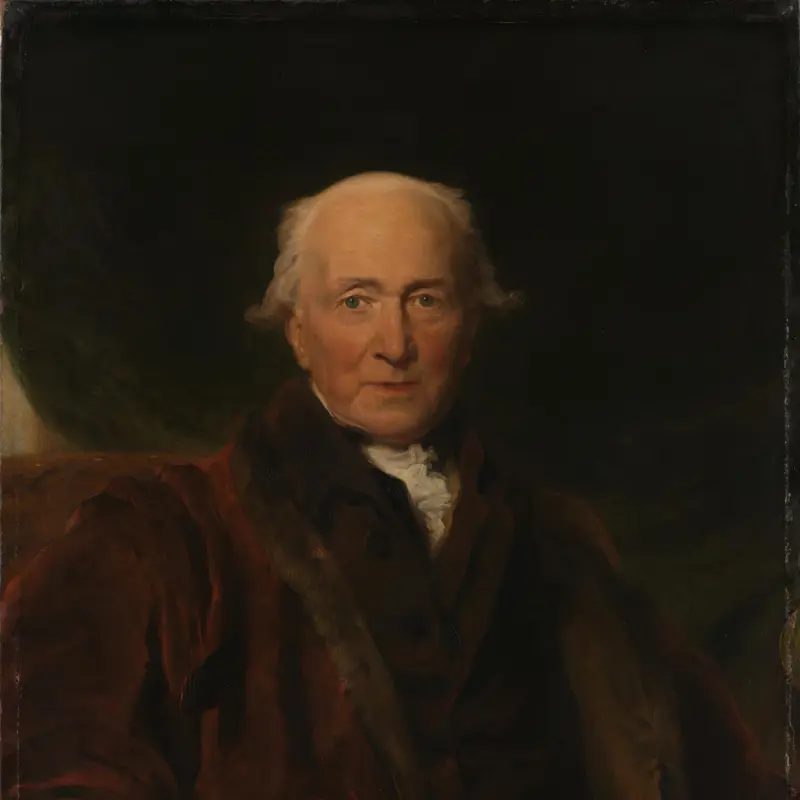John Julius Angerstein (1735–1823), financier and philanthropist, was born in St Petersburg in 1735 to a German family who had settled in Russia; he emigrated to England in about 1749. He acquired his wealth as a marine insurance underwriter and broker, and was a member of Lloyd’s of London. He was also a founder member of the British Institution.
Angerstein amassed a major collection of mainly sixteenth- and seventeenth-century paintings, which came on to the market after his death in 1823. In the following year money was granted by the British government for their purchase and preservation. These 38 pictures, which were kept at 100 Pall Mall, Angerstein’s town house, formed the nucleus of the new National Gallery Collection. Two of the National Gallery’s paintings from the Angerstein collection are now at Tate Britain: William Hogarth, The Painter and his Pug; and David Wilkie, The Village Holiday.
This person is the subject of ongoing research. We have started by researching their relationship to the enslavement of people.
Biographical notes
Insurance broker and connoisseur of art.
Summary of activity
John Julius Angerstein was an underwriter and insurance broker, and a member of Lloyd’s of London, on occasion presiding over meetings or acting as chairman during the 1790s. His early wealth flowed from broking and underwriting in marine insurance, of which an unknown proportion was in slave ships and vessels bringing to Britain from the wider Americas produce grown by enslaved people as well as luxury items such as mahogany and spices. The role and connections of Angerstein and Lloyd’s of London to the insurance of the slave-trade have also yet to be systematically explored. Angerstein was a trustee of estates and enslaved people in Grenada and Antigua, and appeared in the records of the Slave Compensation process as having been previously an interested party for an award in Antigua (probably as a trustee of the London financier Godschall Johnson) as well as in the Slave Registers for two estates in Grenada; there is no clear evidence that he had benefitted financially. His second wife, Eliza Lucas, had a life interest in her first husband Thomas Lucas of Lee’s estates and enslaved people in St Kitts. There is no evidence that Angerstein was a slave-trader or slave-owner in his own right.
The thirty-eight paintings purchased by Lord Liverpool’s government as the nucleus of the National Gallery from the heirs of Angerstein were: Sebastiano del Piombo, The Raising of Lazarus (NG1); Claude, Landscape with Cephalus and Procris reunited by Diana (NG2); Possibly by Titian, The Music Lesson (NG3); Claude, A Seaport (NG5); After Correggio, Group of Heads (NG7); Claude, Landscape with the Marriage of Isaac and Rebekah (‘The Mill’) (NG12); Claude, Seaport with the Embarkation of the Queen of Sheba (NG14); Possibly by Girolamo da Carpi, Marco Bracci with Cardinal Ippolito de' Medici (NG20); Raphael, Portrait of Pope Julius II (NG27); Ludovico Carracci, Susannah and the Elders (NG28); Claude, Seaport with the Embarkation of Saint Ursula (NG30); Gaspard Dughet, Landscape with Abraham and Isaac approaching the Place of Sacrifice (NG31); Damiano Mazza, The Rape of Ganymede (NG32); Workshop of Titian, Venus and Adonis (NG34); Gaspard Dughet, Landscape with a Storm (NG36); After Correggio, Group of Heads (NG37); Peter Paul Rubens, The Rape of the Sabine Women (NG38); After Nicolas Poussin, The Triumph of Silenus (NG42); Rembrandt, The Woman taken in Adultery (NG45); Pupil of Rembrandt, The Adoration of the Shepherds (NG47); Pupil of Rembrandt, The Adoration of the Shepherds (NG49); Anthony van Dyck, The Emperor Theodosius is forbidden by Saint Ambrose to enter Milan Cathedral (NG50); Anthony van Dyck, Portrait of Cornelis van der Geest (NG52); Aelbert Cuyp, A Hilly River Landscape with a Horseman talking to a Shepherdess (NG53); Studio of Peter Paul Rubens, The Holy Family with Saints in a Landscape (NG67); After Correggio, The Agony in the Garden (NG76); Circle of Annibale Carracci, Erminia takes Refuge with the Shepherds (NG88); Justus Sustermans, Double Portrait of the Grand Duke Ferdinand II of Tuscany and his Wife Vittoria della Rovere (NG89); Annibale Carracci, Marsyas and Olympus (NG94); Sir Joshua Reynolds, Lord Heathfield of Gibraltar (NG111); William Hogarth, Marriage A-la-Mode (NG113–18); William Hogarth, The Painter and his Pug (NG112) but transferred to Tate (N00112); Sir David Wilkie, The Village Holiday (NG122) but transferred to Tate (N00122).
Slavery connections
John Julius Angerstein, thirty-eight of whose paintings were purchased as the foundation of the National Gallery, was a trustee of estates and enslaved people in Grenada and Antigua; his second wife had a life interest in her first husband’s estates and enslaved people in St Kitts; and Angerstein’s early wealth flowed from broking and underwriting in marine insurance, of which an unknown proportion was in slave ships and vessels bringing to Britain from the wider Americas produce grown by enslaved people as well as luxury items such as mahogany and spices. But there is no evidence that Angerstein himself was a slave-trader or slave-owner. (Information taken from Nick Draper, ‘The fall of slavery: statues, symbols and social contention’, History & Policy [online], London, 10 June 2020, <http://www.historyandpolicy.org/opinion-articles/articles/the-fall-of-slavery-statues-symbols-and-social-contention> accessed 24 May 2021.)
Abolition connections
No known connections with abolition.
National Gallery painting connections
Angerstein spent some of his wealth building up an impressive private art collection. After his death in 1823, thirty-eight of his paintings were purchased by the British government to form the nucleus of the nation’s first publicly sponsored art gallery. The government also bought the remainder of the lease on Angerstein’s London town house at 100 Pall Mall, which opened as the National Gallery on 10 May 1824. His pictures include works by Raphael, Claude, Rubens, Van Dyck and Hogarth. The Gallery also owns two portraits of Angerstein, both by Sir Thomas Lawrence, one painted when he was over 80 (presented by William IV in 1836), and the other when he was around 55 (bequeathed by Miss May Rowley, a descendant of the sitter in 1965).
Former owner: NG purchased in 1824: NG1–3, NG5, NG7, NG12, NG14, NG25, NG27–28, NG30–32, NG34, NG36–38, NG42, NG45, NG47, NG49–50, NG52–53, NG67, NG76, NG88–89, NG94, NG111, NG113–18; NG112 and NG122, both later transferred to Tate (N00112 and N00122).
Former owner: once owned Valentin de Boulogne, The Four Ages of Man, c.1629 (NG4919).
Bibliography
D. B. Brown, 'Angerstein, John Julius', in J. Turner et al. (eds), Grove Art Online, Oxford 1998-, https://doi.org/10.1093/gao/9781884446054.article.T002901
Checked and found
—
Item on publisher's website
N. Draper, Angerstein, Marine Insurance, the Slave Trade and Slavery, London 2021, https://www.ucl.ac.uk/lbs/media-new/pdfs/angersteinmarine.pdf
Checked and found
—
Item on publisher's website
Egerton, Judy, National Gallery Catalogues: The British Paintings, revised edn, London 2000
History of Parliament Trust (ed.), The History of Parliament: British Political, Social & Local History, London 1964-, https://www.historyofparliamentonline.org/
Checked and not found
—
Item on publisher's website
R. Lang, John Julius Angerstein and Slave-ownership, London 2021, https://www.ucl.ac.uk/lbs/media-new/pdfs/angersteinownership.pdf
Checked and found
—
Item on publisher's website
S. Palmer, 'Angerstein, John Julius', in C. Matthew et al. (eds), Oxford Dictionary of National Biography, Oxford 1992-, https://doi.org/10.1093/ref:odnb/549
Checked and found
—
Item on publisher's website
UCL Department of History, 'John Julius Angerstein', in UCL Department of History (ed.), Legacies of British Slave-ownership, London 2020, https://www.ucl.ac.uk/lbs/person/view/2146631640
Checked and found
—
Item on publisher's website

